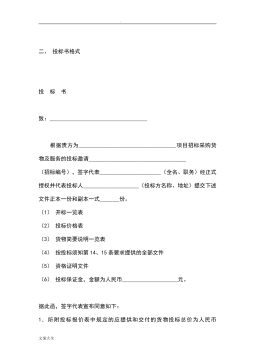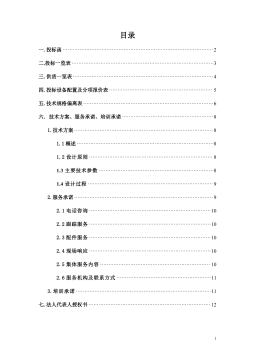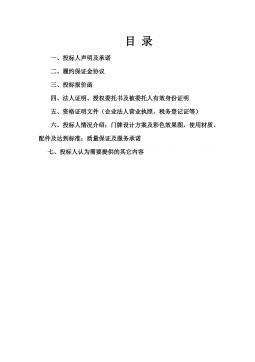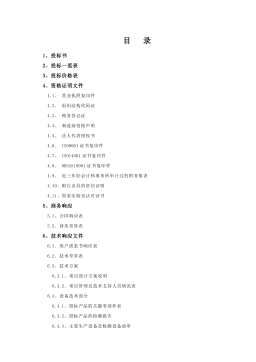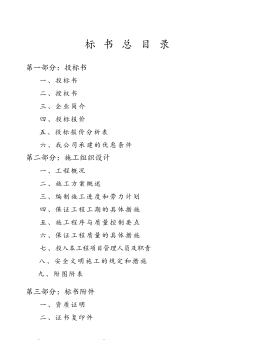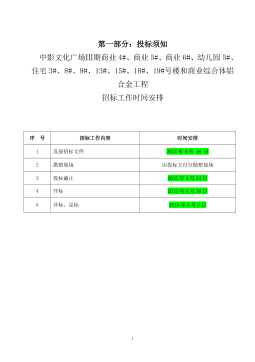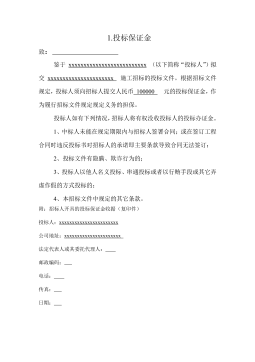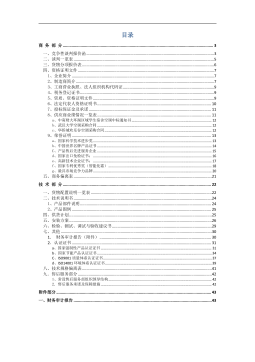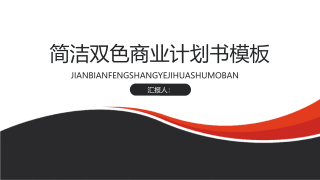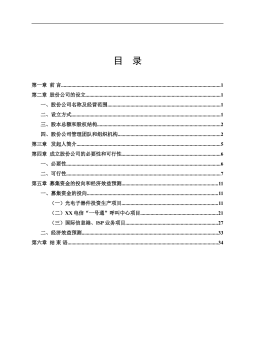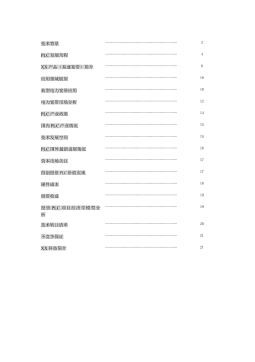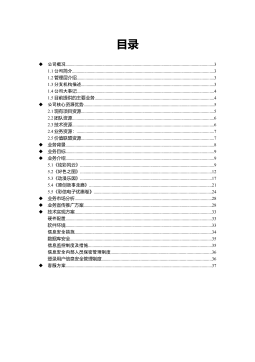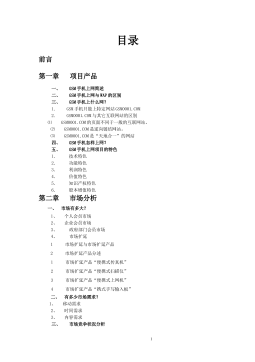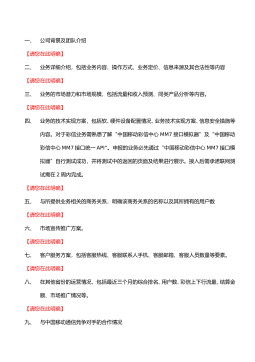我国城乡居民收入差距研究——基于产业政策、区域政策的分析
VIP免费
浙江财经学院硕士学位论文
摘 要
中国统计年鉴的最新资料表明,我国城乡居民收入比已由 1978 年的 2.57:
1 扩大到 2004 年的 3.21:1,农村经济发展缓慢和农民收入水平低下已成
为举国关注的问题。本文从产业政策和区域政策角度对改革开放以来的中国
城乡居民收入差距现状给出恰当的解释,有针对性地提出了缩小城乡居民收入
差距的制度安排和对策。
1.对我国城乡居民收入差距进行了实证分析。我国城乡居民收入差距在时间
序列上大致经历了缩小-扩大-再缩小-再扩大的过程,且有进一步扩大的趋
势。
2.从农产品流通体制、工农业产品价格剪刀差、区域政策差异、城乡产业结
构、农业科技进步率等五个因素对城乡居民收入差距产生的产业原因进行剖析。
3.通过分析产业政策、区域政策的演变历程,提出加强对农业的扶持力度(包
括金融、科技、教育等方面),促进农业经济的健康发展;重构农业流通制度、
农民合作组织等经济体制;加速农业产业化和农村产业高度化,提高劳动生产率
水平;统筹城乡发展,加强公共财政建设,为农业发展提供更多更好的公共产品
等政策建议。
本文的主要创新点在于:
1.国内外学者对城乡居民收入差距以及产业政策、区域政策的研究很多,但
将两者结合起来,从产业政策、区域政策的角度对城乡居民收入差距的产生原因
进行解读,目前相关研究甚少,本文试图进行探索。
2.在对城乡居民收入差距的现状描述中,本文除了采用一般的时间序列分
析、恩格尔系数等常用分析方法和指标外,还采用了空间错位的比较方法,对发
达地区农村居民收入与欠发达地区城市居民收入进行比较,更有现实的比较意
义。
3.在政策建议方面,为有效地缩小城乡居民收入差距提出了一些新的且切实
可行的产业政策和区域政策。
关键词:收入差距;产业政策;区域政策;制度安排
I
浙江财经学院硕士学位论文
ABSTRACT
As the newest China Statistic Yearbook indicates, the ratio of income of urban
residents to rural residents has increased to 3.21:1 in 2004 compared with 2.57:1 in
1978. Slow rural economic development and low level of farmers’ income have
become the matter of concern in the whole nation. The article presents, from the angle
of industrial policy and regional policy, proper explanation on the status of income
disparity between urban and rural residents since the reform and opening up policy,
and puts forward the institutional arrangement and countermeasures to reduce such
disparity.
1. An empirical analysis is conducted on the income disparity between urban and
rural residents. In time sequence, such disparity has undergone the process from
reduction, expansion, reduction again and expansion again, and the tendency is going
to expand.
2. From five factors, which are circulation system of agricultural products, price
difference of industrial and agricultural products, difference of regional policies,
industrial structure for urban and rural areas, and rate of technological and scientific
advance, the article has an analysis on the industrial reasons for such disparity.
3. Through the analysis of evolution process of industrial policy and regional
policy, the article proposes to strengthen the support to agriculture (including financial,
scientific and technological, educational support) so as to promote the sound
development of agricultural economy; to restructure agricultural circulation system,
farmer cooperative organization and other economic systems; to accelerate the
industrialization of agriculture and the heightening of the industries in countryside so
as to raise labor productivity; to coordinate the development in urban and rural areas,
strengthen the construction of public finance so as to provide more and better public
products for the agricultural development.
There are some innovations in the article:
1. Domestic and foreign scholars to the city and countryside inhabitant income
differential as well as the industrial policy, the region policy research are very many,
but unifies both, from the industrial policy, the region policy angle carries on the
explanation to the city and countryside inhabitant income differential production
II
浙江财经学院硕士学位论文
reason, at present is connected the research to be really few, this article attempts to
carry on the exploration.
2. In the description of status of such disparity, this article except uses the
general time series analysis, the Engel's coefficient and so on outside the commonly
used analysis method and the target, but also has used the spatial dislocation
comparison method, receives and owes the developed area city people income to the
developed local countryside inhabitant to carry on the comparison, has the reality
comparison significance.
3. In the aspect of policy suggestion, the article raises some new and feasible
industrial and regional polices for effective reduction of the income disparity between
urban and rural residents.
Key words: Income disparity; Industrial policy; Regional policy; Institutional
arrangement
III
浙江财经学院硕士学位论文
目 录
第一章 前言 ·············································································· 1
第一节 研究背景与研究意义···················································· 1
第二节 文献综述··································································· 1
第三节 理论基础··································································· 4
第四节 研究的内容、方法与创新点··········································· 5
第二章 我国城乡居民收入差距的现状分析········································ 7
第一节 居民收入概念界定······················································· 7
第二节 城乡居民收入差距的动态分析········································ 8
第三节 城乡居民收入差距的区域比较·······································12
第三章 基于产业政策和区域政策的城乡居民收入差距成因分析············16
第一节 农产品流通体制的缺陷················································17
第二节 工农业产品价格剪刀差政策对城乡居民收入差距的影响······18
第三节 区域政策差异对城乡居民收入差距的影响························21
第四节 城乡产业结构不协调对城乡居民收入差距的影响···············22
第五节 农业技术进步率偏低对城乡居民收入差距的影响···············26
第四章 缩小城乡居民收入差距的对策安排与思考······························31
第一节 改革农业经济体制,排除制度障碍·································31
第二节 调整不合理的区域政策,促进农业经济发展·····················34
第三节 加速农村产业结构升级,提高劳动生产率水平··················38
第四节 合理定位政府功能,加大农村公共产品投入·····················41
第五节 总结········································································42
参考文献··················································································44
附录························································································47
致谢························································································48
IV
浙江财经学院硕士学位论文
第一章 前言
第一节 研究背景与研究意义
党的十六届五中全会通过的《中共中央关于制定国民经济和社会发展第十一
个五年规划的建议》,明确提出了建设社会主义新农村的重大历史任务。“建设现
代农业,发展农村经济,增加农民收入”①,成为我国政府当前的一个工作重点,
“三农问题”再次引起学界的广泛关注。
改革开放以来,我国城乡居民收入高速增长,人民生活已步入小康水平。但
我们必须清醒地认识到,目前的小康还是“低水平的,不全面的,发展很不平衡
的”小康,其中“发展很不平衡”指的就是地区之间、城乡之间发展水平的差距。
据中国统计年鉴的最新资料表明,我国城乡居民收入比已由 1978 年的 2.57:1
扩大到 2004 年的 3.21:1,农村经济发展缓慢和农民收入水平低下已成为相当
突出的问题。城乡居民收入差距不缩反扩趋势的根源主要来自制度因素,经济政
策的歧视性导致了城乡差距越拉越大。在计划经济年代,歧视性经济政策主要表
现在产业政策与区域政策方面,即采取剥夺农业剩余进行国家工业化的战略,采
取户籍制度实行城乡隔离,而计划体制下的农产品统派购制度和金融控制使得农
民没有任何致富途径。不仅人为形成了二元经济结构,而且人为形成了二元社会
结构。改革开放后,二元产业政策与区域政策并没有消除。而城市政府和既得利
益集团往往在制定经济政策时继续着非农产业和城市霸权,农业和农村总是被作
为累赘而得不到应有的重视。如果不尽快改变这种歧视性的经济政策,城乡居民
差距将一如既往,甚至还要继续扩大,会带来严重的社会问题。因此,本选题具
有重要的理论和现实意义。
第二节 文献综述
改革开放以前,我国实行高度集中的计划经济体制,城镇和农村各自形成均
等化程度很高的分配格局,城乡居民收入差距在 1964 至 1978 的 15 年时间里,
① 引自十六大报告《全面建设小康社会,开创中国特色社会主义事业新局面》.
1
浙江财经学院硕士学位论文
基本上保持着稳定。我国学者在 80 年代中期以前,关于城乡收入分配的研究主
要是集中在收入分配原则的规范性上,重点讨论“收入分配的原则”,对城乡居
民收入差距进行实证性测度和研究的文献甚少。
对于中国城乡居民收入差距的实证研究,上世纪 70 年代末到 80 年代初,主
要见于统计报告。80 年代中后期和 90 年代初,随着西方现代经济学的广泛传播,
洛伦兹曲线、基尼系数等现代分配理论和方法的引入,研究也进一步深入。朱玲
(1992)首先分析了非农收入在 1978-1989 年间对收入增长贡献的上升趋势,然
后在对 1988 年调查数据进行十等分组法和基尼分项收入贡献率计算的基础上,
将 20 世纪 80 年代农村非农产业的发展,尤其是乡镇企业的兴起,作为中国农村
总体收入差距以及农村区域间收入差距扩大的主要影响因素,并得出在高收入的
省份非农产业促使了农户收入均等化的结论。陈宗胜(1994)以 1978 年和 1984
年农村居民和职工的收入和消费支出以及增长速度的不同为依据,分析工农之间
日趋缩小的差别。同期其他学者的研究,则包括:张平(1992)基于 1988 年的
调查数据对分省收入进行收入差距的收入来源分解,计算的结果表明省际间区域
差别一直处于上升态势,其中非农产业的工资性收入起了决定性作用,同时表明
二元经济结构对收入差距呈现出高度的正相关。白志礼(1993)等以省际数据为
基础对东、中、西三大地区和南、北两大地区之间的收入差距进行了分析;Rozzlle
(1994)对农村社会总产值 5 个组成部分——农业产值、农村工业产值、农村运
输业产值、农村建筑业产值、农村商业服务业产值—进行分解,以寻找地区间农
村发展不平衡的结构原因。
90 年代中后期以来,由于我国国民体系的逐步完善,可供研究的统计数据
大大增加,对城乡居民收入差距的研究更进一步深化,其主要的进展是:(1)使
用的指标和方法更加多样化:除使用城乡人均收入比率、洛伦兹曲线和基尼系数
外,还使用结构相对数、泰尔指数和计量模型法等进行研究。(2)实证分析更严
谨。唐平(1995)基于国家统计局的调查资料给出了我国 30 个省份以及东、中、
西三大经济地带的区域内部基尼系数。赵人伟、李实(1997)根据抽样调查结果,
通过城乡居民人均年收入比值及其变动,对体制改革过程中城乡居民收入差距的
变化作了初步研究。张平(1998)通过对收入函数的构建以及对收入差距的收入
来源分解,分析了中国区域因素对农村居民收入差距的影响,并将区域间收入差
距拉大的最主要因素归结为非农收入的差距。蔡继明(1998)注意到了城市化对
2
摘要:
展开>>
收起<<
浙江财经学院硕士学位论文摘要中国统计年鉴的最新资料表明,我国城乡居民收入比已由1978年的2.57:1扩大到2004年的3.21:1,农村经济发展缓慢和农民收入水平低下已成为举国关注的问题。本文从产业政策和区域政策角度对改革开放以来的中国城乡居民收入差距现状给出恰当的解释,有针对性地提出了缩小城乡居民收入差距的制度安排和对策。1.对我国城乡居民收入差距进行了实证分析。我国城乡居民收入差距在时间序列上大致经历了缩小-扩大-再缩小-再扩大的过程,且有进一步扩大的趋势。2.从农产品流通体制、工农业产品价格剪刀差、区域政策差异、城乡产业结构、农业科技进步率等五个因素对城乡居民收入差距产生的产业原因进行...
作者:周伟光
分类:高等教育资料
价格:150积分
属性:50 页
大小:770.69KB
格式:PDF
时间:2024-09-20


